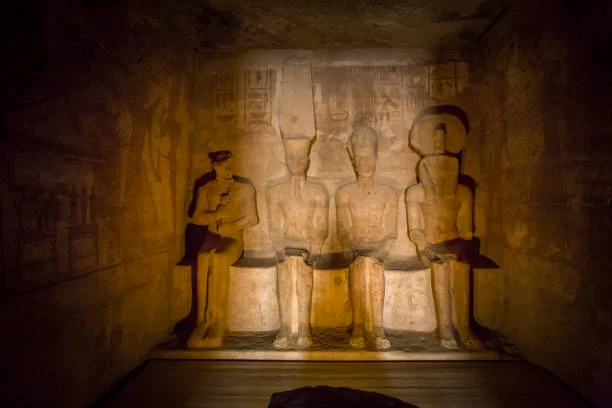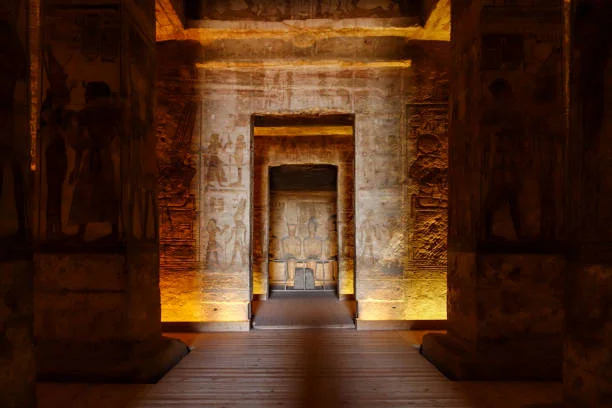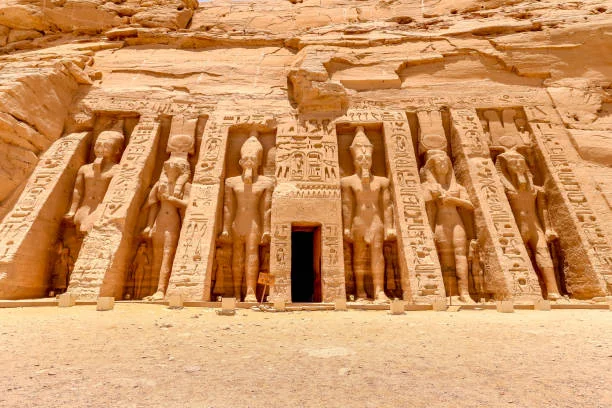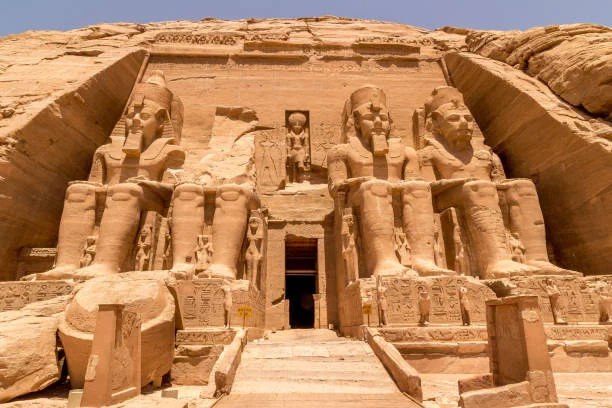PANORAMICA
We will pick you up from your hotel Aswan, and start a new adventure gifted to the World by King Ramses II, the Great Temple of Abu Simbel, close to Egypt's southern border, is one of Egypt's most magnificent structures. Around 1264 BC, King Ramesses II (the Great) of the Nineteenth Dynasty carved it out of the living rock. The four imposing, seated colossal statues that dominate the temple's façade are its most well-known features. A long-ago earthquake caused one of these to collapse, and its remains can still be seen on the ground.
The main hall is lined with enormous standing statues of the king and leads to the sanctuary, which is home to four gods: Amun Ra, Ra Horakhty, Ptah, and a deified Ramesses II. The temple was constructed with such accuracy that on the 22nds of February and October each year, the sun's rays pass through the main hall and illuminate the interior statues. The goddess Hathor and Queen Nefertari, the Great Royal Wife of Ramesses II, are honored in the Small Temple, another rock-cut temple to the north. Her colossi are the same size as those of her husband on the façade of the Small Temple, a very uncommon instance of such display.
After the construction of the Aswan High Dam in 1968, the two temples were relocated from their original location because they were in danger of being submerged. UNESCO spearheaded a global effort to complete the relocation, and the temple was added to its list of World Heritage Sites in 1979, then we will go back to your hotel.




